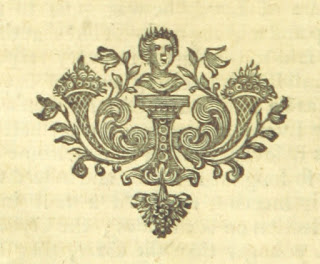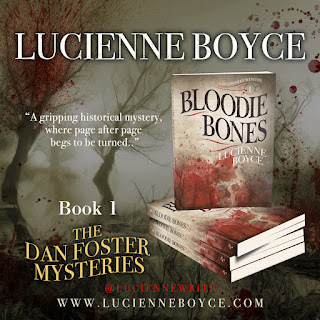Ignored, patronized and mislabeled: Eliza Haywood and The Female Spectator
Posted on 31st October, 2020 in Eighteenth Century, Eliza Haywood, J B Priestley, The Female Spectator, Women Writers
I have been reading a selection of articles from The Female Spectator
in an edition selected and edited by Mary Priestley and published in 1929. The
introduction is by the writer J B Priestley (1894–1984), who was Mary’s
brother. Generally, introductions tend to display at least some respect for the
author whose work follows. Priestley takes a different approach: he uses his
introduction to demolish Haywood’s credibility, deny her talent, and belittle
her achievement.
The Female Spectator was conceived, written and edited by Eliza Haywood (1693?–1756). It was modelled on the Spectator, a
paper run by Richard Steele and Joseph Addison from 1711 to 1712, but it broke
new ground in being the first magazine for women written by women. It was, says
Priestley, the “ancestress” of modern women’s periodicals, although “like an
ancestress, it is of course wildly different from anything we know now.”
Eliza Haywood, Priestley tells us, had
“tried her hand at many things” before she became “an Addison in
petticoats”: she acted, adapted plays and wrote novels. Unfortunately, he
explains, her writing is “ponderous” and “pompous”. It’s not her fault, he adds
magnanimously, but a fault of the eighteenth-century literary style which is
“abstract”, “dreary” and colourless. What a pity, sighs Priestley, that Haywood
couldn’t break away from it, but “only the greatest men of letters” were able
to do that. These great men are, of course, Steele, Goldsmith, Fielding and
Sterne.
As an example of Haywood’s “choke-pear” style Priestley quotes an
introductory sentence from The Female Spectator:
“Reading is universally allowed to be one of the most improving, as well
as agreeable amusements; but then to render it so, one should, among the number
of books which are perpetually issuing from the press, endeavour to single out
such as promise to be most conducive to those ends.”
Yes, it’s true, they really did write like that in the eighteenth
century. Here is a sentence taken from the preface to a novel discussing the
question of the balance a novel should achieve between entertainment and
instruction (an issue which preoccupied eighteenth-century moralists):-
“They [some readers] were of opinion that in all works of this, and of
the dramatic kind, story or amusement should be considered as
little more than the vehicle to the more necessary instruction: that
many of the scenes would be rendered languid were they to be made less busy:
and that the whole would be thereby deprived of that variety which is deemed
the soul of a feast, whether mensal or mental.”
In terms of ponderousness and pomposity there doesn’t seem to be much to
choose between them. The last sentence, however, is from Samuel Richardson’s
preface to his 1747–8 novel Clarissa, Or The History of a Young Lady.
Eliza Haywood doesn’t compare well to him either, although she was one of the
best-known novelists of the period whose work preceded his both in form, theme
and characterisation. She also wrote a parody of Richardson’s novel, Pamela,
or Virtue Rewarded entitled The Anti-Pamela; or Feign’d Innocence
Detected.
Much of the work of both authors is preoccupied with the figure of what
Priestley calls the “Seducer”. This is, of course, a euphemism. Clarissa
is a “Seducer” story on a massive scale (1,499 pages) as it charts Lovelace’s
quest to “seduce” the eponymous heroine. Many of Haywood’s novels also centre
around sex, and explore the sometimes catastrophic implications of sexual
relations for women. She even went so far as to write about unmarried
motherhood, as well as rape.
The difference, according to Priestley, is that while Eliza Haywood
“offers us some good specimens of the Seducer” she “does not understand them”.
She fails to grasp that it isn’t about women at all. It isn’t female
irresistibility that motivates the seducer, but boredom. Eighteenth-century
gentlemen (yes, they are still gentleman) didn’t have golf, bridge or cars, and
if they didn’t like hunting or politics, what else could they do but “go
seducing”? And, “like good sportsmen”, it was only natural that they chose
“difficult subjects” to add to the thrill of the chase. Haywood isn’t
perceptive enough to understand that it’s nothing to do with “unbridled
desire”. It’s “an intellectual interest”. The same sort of interest, perhaps,
that wealthy male students in Durham recently expressed on social media when
they discussed a competition to have sex with poorer women students.
Richardson’s Lovelace must have chosen one of the most difficult
subjects of all. To succeed at his sport, he tricks Clarissa into leaving her
family, holds her prisoner, lies to her, forges letters from her friends,
gaslights her (if you’d done what I wanted I wouldn’t have had to use violence
against you), and when all else fails and she won’t have sex with him, he drugs
her and rapes her. Sorry, I meant seduces.
In spite of all her shortcomings, her “empty pomp and ceremony”,
Priestley suggests that Haywood’s subjects are “good entertainment”. We can
“smile over” the book, read bits out loud “at odd times”, and smile (again)
“over her solemn editorials”. Never mind that Mary Priestley characterises
Haywood’s novels as “sprightly”. Priestley isn’t going to toe his sister’s
line, and for Mary Priestley’s two timid introductory paragraphs he gives us
eight and a half robust pages.
So who was Eliza Haywood? She was a novelist, poet, essayist, playwright
and actress. Contrary to what Priestley implies with his “tried her hand at”,
these were all fields in which she had some success. She did not merely adapt
plays, she also produced original works. She was a prolific and best selling
novelist who was mistress of a range of styles. She used romance, the
epistolary form, narrative prose, voyage literature, myths and fairy tales in fiction
that interrogated gender stereotypes and explored relations between the sexes.
And, in contrast to Priestley’s claim that her style was all “pomp and
ceremony”, her novels are written in a much livelier style than the sentence he
quotes. It seems Priestley is unaware that even in the eighteenth century
writers could use different styles. She was, in addition, an innovator at the
forefront of trends which were followed by other novelists. In her ODNB entry
on Haywood, Paula R Backscheider also notes that she was “the first woman to write sustained drama criticism”. On top of all
this, she translated a number of works from French.
Backscheider also records that “The Female Spectator,
begun in 1744, was a solid success and survived far longer than most London
periodicals”. Helene Koon has commented
that The Female Spectator has been “ignored, patronized and mislabeled”.
Priestley’s introduction is yet another example of a literary tradition that
has excluded and undermined women writers. It is an inheritance that we are
still challenging and recreating, and not only in a literary context.
The Female Spectator, Being Selections from Mrs
Eliza Heywood’s [sic] periodical (1744–1746), chosen and edited by Mary
Priestley, With an Introduction by J B Priestley and Decorations by Constance
Rowlands (London: John Lane The Bodley Head Ltd, 1929)
Haywood [née Fowler], Eliza (1693?–1756), Paula R Backscheider, Oxford Dictionary of National Biography, https://doi-org.ezproxy2.londonlibrary.co.uk/10.1093/ref:odnb/12798
Eliza Haywood and The Female Spectator, Helene Koon, Huntingdon Library Quarterly, Winter, 1978, Vol 42, No 1,
pp. 43–55, https://www.jstor.org/stable/3817409
On the Durham incident see
https://www.theguardian.com/education/2020/sep/23/durham-university-withdraws-freshers-place-over-abhorrent-online-posts
Images:
Pages from Love in Excess, or, The Fatal Enquiry, by Eliza Haywood, published 1719, British Library on Flickr, No Known Copyright Restrictions



